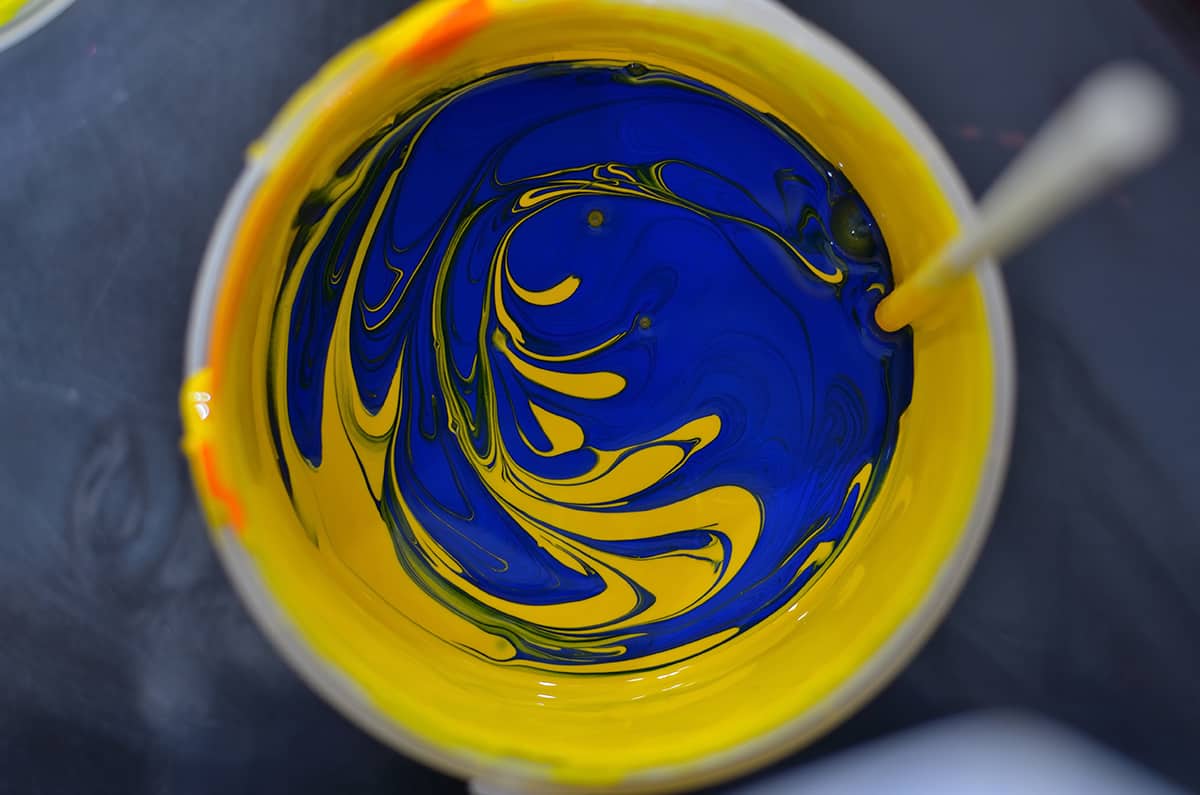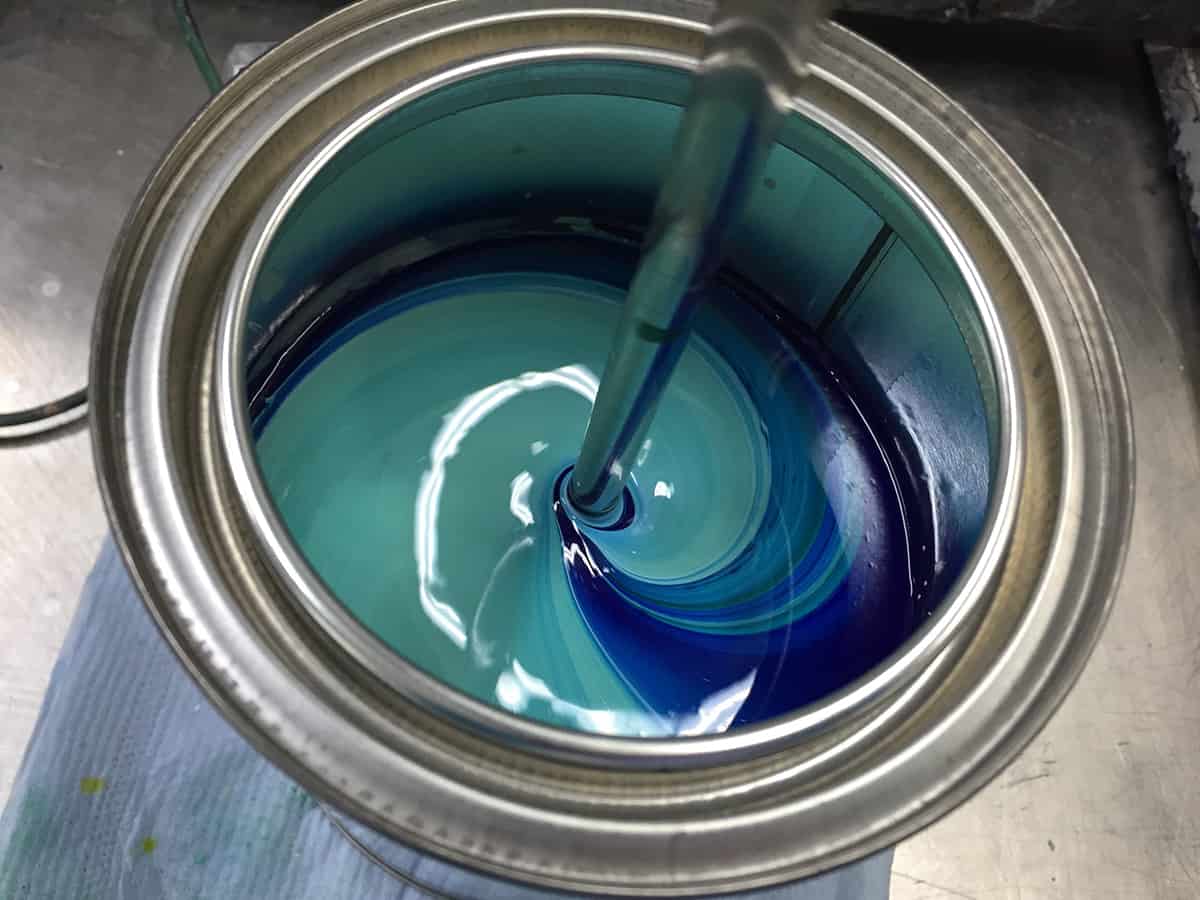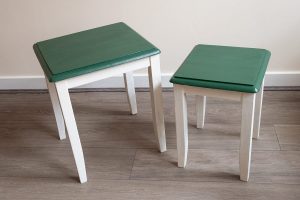The term ‘boxing paint’ is something you probably haven’t heard before unless you’re a professional painter and decorator or you’re very keen on DIY.
Boxing paint is a technique that most large-scale decorators use to ensure consistent results that make for happy customers.
Here we look at exactly what boxing paint is and how you can use it to achieve professional standards at home.
What is Boxing Paint?
Boxing paint is a process whereby several cans of paint are mixed together before beginning a project. You would typically do this if you will be using more than one can for a particular area, for example, for one very large wall or for the exterior of a property.
This eliminates the chances of color variation occurring between paint batches which can result in a blotchy finish or uneven finish.
This is a technique predominantly used by professional painters, but it can be employed by home DIY enthusiasts to ensure better and more consistent results. It can save the time, effort, and expense associated with having to repaint inconsistent walls.
Why Should You Box Paint?
Although paint is mixed using very precise technology, unfortunately, slight shade or color differences can occur between cans of paint which are supposed to be the same color.
If you paint the main part of a wall in one can of paint, then open up a second can of the same color to do the cutting in around the edges of a wall with a brush, you may find that there is a color discrepancy between the two identical cans which means the edges of your wall are a different color to the main area.
Similarly, you may paint one side of a wall in one can of paint, then start on the second can of paint to finish the other side only to find it is a slightly different shade than the first can, and your wall now needs to be completely repainted.
This can happen due to human error if you get your paint mixed in the store, or sometimes the paint machine can spit out an extra bit of paint which will affect the whole can.
Usually, the color variation cannot be detected by the human eye when opening the can or applying the paint, and it isn’t until it has dried on the wall that you will notice the problem. Boxing the paint is a technique that eliminates the chances of color variation happening between different cans because all of the cans you plan to use on a project will be mixed together to ensure color consistency.
Boxing paint is also a good technique to use if you buy the same color of paint from different stores or at different times. For example, if you have half a can of paint leftover from an old painting project and plan to use the same color on a new project but will need extra paint, the old can plus the new can will dry differently due to the age difference.
To prevent this difference from being evident on your walls, you should box the paint by mixing the contents of the old can and the new can together to form one uniform paint color and texture.
How Does Boxing Paint Work?
Boxing paint requires you to mix one or more cans of paint together to turn several potentially different batches of paint into one uniform batch of paint. Any differences between the paint in different cans will be eliminated when all of the paint is mixed together, resulting in one batch of paint which is consistent and identical in both color and texture to give a perfect finish.
How to Box Paint
For a big project, you will need a large container that will hold around 5 gallons of paint. Empty your individual cans of paint into the large container and stir with a long mixer to ensure all of the paint is evenly mixed together, including the paint in the bottom and around the edges.
Alternatively, some decorators box paint as they go, especially if they do not have a large container to mix paint in. To do this, start painting your project from one can of paint, and when your can is half empty, open a new can and pour half of it into the first can, and mix.
Once the first can is finished, you will move on to your second can, which will already be half empty because you poured half of it out. You can then open your third can, pour half of it into the second can, and mix. This process can be continued until you have finished your project.
Should You Always Box Paint?
There are times when boxing paint is essential to ensure professional and consistent results and times where it will be less important and not entirely necessary. For large areas where you expect to use more than one can of paint on a singular surface, you should definitely box paint. This will prevent color variation that can be detected by the human eye and save you from having to repaint any areas which have dried in a different shade.
If you are covering a small surface where you will only use one can of paint, then boxing paint will not be an option as you simply won’t have another can that you need to mix the paint with. You can save time and hassle on some projects by not boxing the paint if you can make sure that you start a new can of paint at a natural break.
For example, use one can of paint to paint a wall and then open the next can to paint the adjoining wall.
Any color variation will not be detectable between the two walls because they are broken up by the corner, and any slight difference in shade will simply look like a shadow or light hitting the wall at a different angle.







